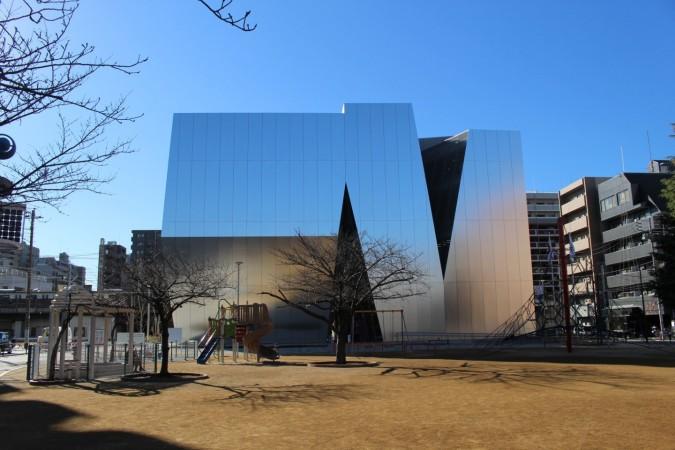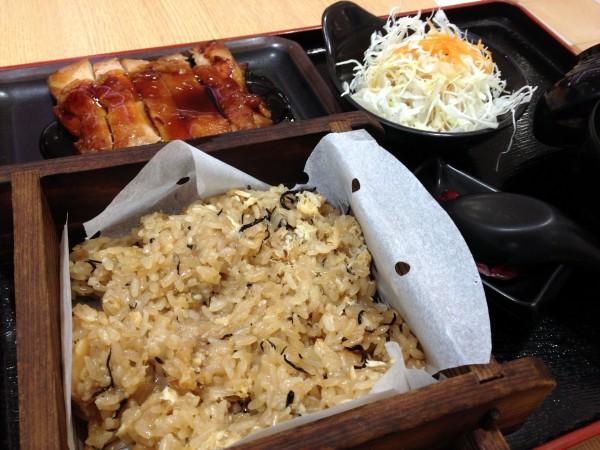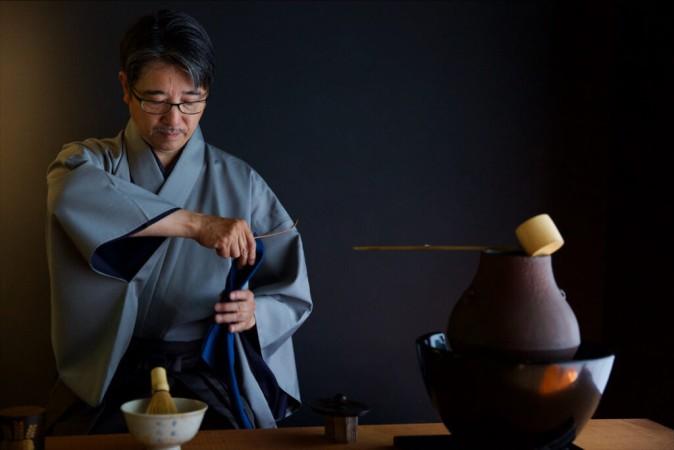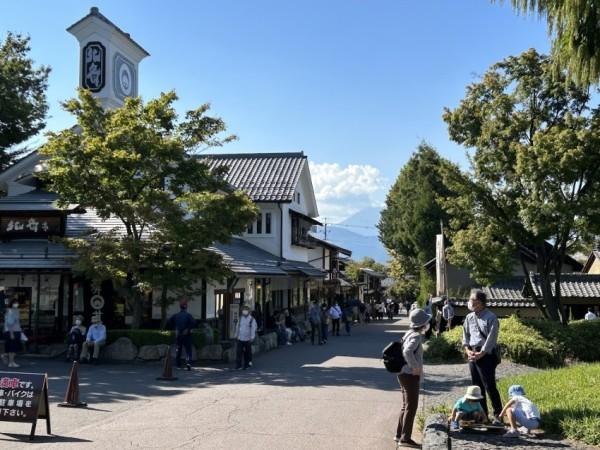Explore Obuse - Japan Travel, Asia
Tucked away in Nagano Prefecture, Obuse is a charming town that draws visitors back in time and immerses themselves in rich history, local art, and tranquil beauty. This place blends the best of traditional Japan with modern, laid-back vibes. While many travelers to Japan may focus on major cities like Tokyo or Kyoto, Obuse offers a unique cultural experience that shouldn’t be missed. This quaint town is best known for its connection to the renowned artist Hokusai and its delicious explore chestnut-based delicacies.
Ready to dive deeper into Japan's wonders? Discover our premium Japan tours here for an extraordinary experience.
Population: Approximately 11,000 in 2019.
Economy: Obuse's economy thrives on tourism, agriculture, and local craftsmanship. It’s famous for chestnut farming, traditional sake brewing, and artisan goods, with a strong focus on preserving cultural heritage.
Landmarks: Famous for the Hokusai Museum, Gansho-in Temple, and the Masuichi Sake Brewery.
Japan

Overview of Obuse
History & Cultural Influence
Obuse’s rich history dates back to the Edo period, and it continues to be a cultural hub today. One of the most notable aspects of Obuse is its deep connection to the legendary ukiyo-e artist Katsushika Hokusai. Aside from Hokusai’s legacy, Obuse is home to a number of historical landmarks, giving its visitors a glimpse into traditional Japanese life during the Edo era. Obuse isn’t just about art and history. It’s also a town deeply rooted in traditional Japanese craftsmanship. Sake breweries, such as the famous Masuichi Sake Brewery, continue to thrive here, preserving time-honored methods passed down through generations.
Interaction with the Locals
Obuse is a very small town with roughly 11,000 residents. The town's residents are noted for their warm friendliness and strong sense of community. Many families have lived in Obuse for generations, preserving traditional crafts, businesses, and cultural practices. The locals take pride in their town’s artistic heritage, especially its connection to the famous ukiyo-e artist Hokusai. Visitors often find that Obuse’s residents are friendly, welcoming, and eager to share their town’s rich history and traditions.

Hokusai Museum - © Wikimedia
Top Attractions in Obuse
Obuse may be small, but it’s brimming with attractions that offer something for every kind of traveler. Whether you’re an art enthusiast, a history buff, or someone looking to unwind in nature, Obuse has a variety of must-see spots that will leave you enchanted.
Hokusai Museum
The Hokusai Museum is one of the town’s key attractions, dedicated to the life and work of Katsushika Hokusai, Japan’s most famous ukiyo-e artist. The museum features a wide range of Hokusai’s masterpieces, including his lesser-known works created during his later years in Obuse. In addition to his iconic prints, visitors can see sketches, paintings, and personal artifacts that offer insight into his artistic journey.
Gansho-in Temple
Located just outside the town center, Gansho-in Temple is a serene Buddhist temple known for its impressive ceiling painting, "The Phoenix," created by Hokusai at the age of 88. The temple grounds are surrounded by lush gardens that change beautifully with the seasons—from cherry blossoms in spring to vibrant autumn leaves—making Gansho-in an ideal spot for quiet reflection and photography.
Masuichi Sake Brewery
For those interested in Japan’s rich sake-making traditions, a visit to Masuichi Sake Brewery is a must. The brewery has been making sake for nearly 300 years, utilizing traditional methods passed down through generations. Visitors can take a guided tour to learn about the intricate process of sake brewing, from the fermentation of rice to the unique brewing techniques used in Nagano and sample their high-quality sake.
Obuse Park
Nature lovers will appreciate Obuse Park, a tranquil green spot ideal for a leisurely stroll or a relaxed picnic. The park is especially popular in the spring, when cherry blossoms form a stunning pink canopy. It’s also a great spot for families, as there are plenty of open areas for kids to play. Throughout the year, the park hosts various events and festivals, giving visitors a chance to engage with the local community.

Gansho-in Temple - © SNOW MONKEY RESORTS
Must-Try Dishes in Obuse
Obuse’s culinary tradition is deeply connected to its agricultural roots and seasonal produce, with chestnuts playing a starring role in many dishes. However, there’s much more to Obuse’s food culture than just chestnuts.
- Chestnut Dishes: As the chestnut capital of Japan, Obuse offers an array of chestnut-based delicacies that go beyond sweets. Kuri okowa (chestnut rice) is a popular local delicacy that combines sticky rice and chestnuts for a subtle sweet and savory flavor. Chestnut cakes and cookies are also popular, with many local patisseries offering their own variations.
- Soba Noodles: These buckwheat noodles are served either cold with a dipping sauce or in hot broth, making them versatile and perfect for any season. Soba in Obuse uses locally grown buckwheat, giving the noodles a distinct texture and flavor that’s celebrated throughout the region.
- Oyaki Dumplings: Oyaki are fermented buckwheat or wheat dumplings filled with seasonal vegetables, mushrooms, or sweet fillings like anko (red bean paste). Obuse offers versions loaded with chestnut paste or locally sourced vegetables.
- Hobamaki: Hobamaki is a unique dish , where rice and seasonal ingredients are wrapped in magnolia leaves and steamed. In Obuse, the filling often includes chestnuts, mushrooms, and other local vegetables, making the flavor earthy and aromatic.
- Kuri Kinton: For those with a sweet tooth, kuri kinton is another chestnut-based dessert you must try. It’s a sweet, smooth chestnut paste that’s often served during Japanese New Year but is also available in Obuse year-round. The delicate sweetness of the chestnut shines through, making it a light and flavorful dessert that pairs well with green tea.

Kuri okowa - © Wikipedia
Festivals & Local Celebrations
Obuse’s lively festivals and celebrations offer visitors an authentic look into the town’s culture and traditions. These events showcase the deep-rooted connection the locals have with their land, art, and food.
Obuse Chestnut Festival
The Obuse Chestnut Festival is the town’s signature celebration, held annually during the autumn harvest season. It honors the town’s beloved chestnuts, which have been a vital part of Obuse’s identity for centuries. The festival includes chestnut picking, food stalls serving chestnut-themed dishes, and performances that bring the community together.
Cherry Blossom Festivals
In the spring, Obuse comes alive with cherry blossom festivals. The town’s parks, especially Obuse Park, are filled with blooming sakura trees, and locals and visitors gather for hanami (flower viewing). The cherry blossom festivals feature picnics, live performances, and food vendors, creating a festive atmosphere to enjoy the beauty of spring.
Summer Matsuri
During the summer months, Obuse hosts traditional matsuri (festivals), where you’ll see colorful yukatas, lively parades, and fireworks. These celebrations are a fantastic opportunity to experience Japanese culture in a fun, vibrant setting. Local food stalls, games, and performances make these festivals a highlight for both residents and tourists.
Want to know about Nikko? Check out our insights here and see why it's worth a visit.

Obuse Chestnut Festival - © Obuse Kanko
What to Do in Obuse
- Hiking and Cycling Tours: For outdoor enthusiasts, Obuse provides access to beautiful hiking trails and cycling routes. You can rent a bike and take a leisurely ride along Kurinoki Road, a chestnut-lined path that leads to various cultural sites. For more adventurous hikers, nearby mountains offer trails that reward you with breathtaking views of the countryside.
- Art Workshops: Obuse is a town of artists, and many local galleries and studios offer art workshops where you can try your hand at traditional Japanese art forms. Visitors can learn how to create ukiyo-e prints, participate in calligraphy classes, or join a pottery-making session.
- Japanese Tea Ceremonies: One of the most peaceful and culturally enriching activities in Obuse is participating in a traditional Japanese tea ceremony. Several venues in town offer this immersive experience, where you’ll learn about the art of preparing and serving matcha tea in a serene setting.
- History Tours: To fully appreciate the rich history of Obuse, consider taking a history tour with a local guide. These tours will give you deep insight that delve into the town’s past, including its Edo-period architecture, its connection to Hokusai, and the legacy of the Masuichi family.
Shopping in Obuse
- Chestnut Product Stores: You’ll find a variety of chestnut-based goods, including chestnut cakes, candies, and even chestnut-infused sake. Obuse’s famous kuri yokan (chestnut paste jelly) is a popular souvenir, as is their chestnut-based confectionery.
- Artisan Handcraft Stores: Many of Obuse’s shops feature handcrafted items, including pottery, wood carvings, and textiles made by local artisans. Some artisans even offer demonstrations or workshops, where you can watch them create their wares or try making your own.
- Local Markets: Obuse also has several local markets where you can purchase fresh produce, homemade foods, and artisanal crafts. These markets are great places to mingle with locals and sample some of the region’s best offerings, including fresh fruits, vegetables, and locally made sauces or pickles.

Japanese Tea Ceremonies - © Mukayu
Weather in Obuse: Best Time to Visit
Spring in Obuse
Spring in Obuse is a lovely season, with temperatures ranging from 10°C to 20°C (50°F to 68°F). The town comes alive with cherry blossoms, making it a great time for outdoor activities like hiking, cycling, and visiting Obuse Park for hanami (cherry blossom viewing). The bright colors of the blossoms contrast beautifully with the blue sky, creating picture-perfect moments for visitors.
Summer in Obuse
Summer in Obuse is warm and humid, with temperatures ranging between 20°C and 30°C (68°F to 86°F). While the heat can be intense, it’s also the season for festivals, outdoor events, and vibrant nature. Visitors can enjoy hiking and visiting local gardens at their peak bloom, or cool off by visiting one of the nearby rivers.
Autumn in Obuse
Autumn in Obuse is arguably the best time to visit, with cooler temperatures (10°C to 20°C or 50°F to 68°F) and stunning fall foliage. The vibrant reds, oranges, and yellows of the leaves transform the town into a dreamy wonderland. This is also the season for the Obuse Chestnut Festival, where visitors can enjoy the harvest and experience local traditions.
Winter in Obuse
Winter in Obuse is cold and quite dry, with temperatures often dropping below freezing. Snow is common, turning the town into a serene, white landscape. Visitors can enjoy a more peaceful, less crowded experience, with cozy ryokan stays and hearty local winter dishes. It’s also a great time for skiing in nearby areas like Nozawa Onsen.

A corner of Obuse on a sunny day - © Japan Today
Essential Travel Information
Getting Around Obuse
- Walking: One of the best ways to experience Obuse is simply by walking. The town is compact, and most of its key attractions, including the Hokusai Museum, Gansho-in Temple, and various shops and cafes, are within a short walking distance from each other.
- Cycling: If you want to cover more ground while enjoying the beautiful rural landscapes of Obuse, renting a bicycle is a fantastic option. Cycling allows you to explore further afield, such as the Kurinoki Road, a scenic path lined with chestnut trees that winds through the countryside and leads to local attractions.
- Public Transport: Though Obuse is small, there are a few local buses that connect the town with nearby areas, making it easier to reach attractions outside the immediate center or travel to other towns.
- Taxis: For visitors who prefer the comfort and convenience of door-to-door service, taxis are readily available in Obuse. While they are more expensive than walking or public transport, they offer flexibility, especially for visitors with limited time or those traveling with heavy luggage.
ATM & Banking Services
In Obuse, tourists will find that accessing cash and banking services is relatively easy, though it's important to be prepared as some smaller establishments may only accept cash. ATMs are available in convenience stores and select locations around town, with many accepting international cards for withdrawing yen. Currency exchange services are limited in the town itself, so it's advisable to exchange money before arriving or at nearby cities with more extensive banking options.
Where to Stay in Obuse
- Ryokan (Japanese Inns): These inns provide rooms with tatami mat flooring and futon bedding, creating an immersive cultural experience. Many ryokan in Obuse also offer onsen (hot springs) or private baths, allowing guests to relax after a day of exploring. Meals at ryokan are often included, featuring locally sourced ingredients and traditional Japanese dishes like kaiseki (a multi-course meal).
- Guesthouses and Minshuku: For budget-conscious travelers, guesthouses and minshuku (family-run inns) offer cozy and affordable options. These accommodations often provide a more intimate experience, with basic amenities and the chance to interact with local hosts.
- Hotels: For those who prefer modern conveniences, Obuse has a selection of hotels that provide all the necessary amenities, including private bathrooms, Wi-Fi, and in-house dining options. These hotels are well-suited for travelers looking for convenience and comfort, offering a more familiar experience.
Looking for more adventures? Dive into Osaka, another famous destination in Japan, with our article here.
Articles for you

Explore Yala National Park - Sri Lanka Travel, Asia
Tucked away in Sri Lanka’s southeastern corner, Yala National Park is where wild nature meets deep tradition. Known worldwide for its leopard population, the park is also home to elephants, sloth bears, crocodiles, and hundreds of bird species. Beyond wildlife, Yala opens doors to a cultural landscape dotted with ancient temples, Buddhist ruins, and coastal villages. For travelers seeking more than just a safari, Yala offers a chance to explore eco-tourism, local communities, and sacred heritage sites.
Population: The Yala National Park area doesn’t have a human population.
Economy: The economy around Yala National Park thrives on a blend of eco-tourism, agriculture, and local services. Safari tours, eco-lodges, and cultural experiences drive steady income for nearby towns like Tissamaharama and Kataragama, supporting thousands of families.
Landmarks: Famous for Block I of Yala and wildlife encounters, including elephants, sloth bears, crocodiles, and exotic bird species.

Explore Galle - Sri Lanka Travel, Asia
Nestled on Sri Lanka’s southern coastline, Galle is a vibrant city where history meets the sea. Its cobbled streets, colonial architecture, and serene beaches make it a must-visit destination for travelers seeking a blend of culture, adventure, and relaxation. A UNESCO World Heritage site, Galle captivates visitors with its Dutch Fort, bustling markets, and friendly locals. Whether you’re exploring the ramparts at sunset or savoring fresh seafood by the shore, Galle promises an unforgettable journey into Sri Lanka’s heritage.
Population: Approximately 113,000 in 2023.
Economy: Galle’s economy thrives on tourism, trade, and fisheries. The city’s historic fort, colonial architecture, and coastal charm draw thousands of international visitors each year, making tourism its main economic driver. Fishing remains vital for local livelihoods, supplying fresh seafood across the region.
Landmarks: Famous for the Galle Fort, Dutch Reformed Church & Maritime Museum, and Unawatuna Beach.

Explore Bentota - Sri Lanka Travel, Asia
Nestled along Sri Lanka’s southwestern coast, Bentota is a tropical paradise that blends golden beaches, vibrant culture, and thrilling adventures. Famous for its calm waters, luxury resorts, and scenic river estuary, Bentota has become a top destination for travelers seeking both relaxation and authentic experiences. From serene beach walks at sunrise to adrenaline-pumping water sports, this coastal town offers a perfect balance of leisure and exploration. With its proximity to Colombo and Galle, Bentota is easy to reach, making it an ideal stop for both short escapes and extended holidays.
Population: Approximately 37,000 in 2023.
Economy: Bentota’s economy thrives mainly on tourism, which drives local businesses such as hotels, restaurants, and wellness retreats. The town also benefits from fishing, coconut cultivation, and handicrafts like wood carving and batik textiles. Many residents rely on the growing demand for water sports and Ayurvedic treatments, making tourism the backbone of both income and employment in the area.
Landmarks: Famous for Bentota Beach, Bentota River Safari, and Kande Vihara Temple.

Explore Mirissa - Sri Lanka Travel, Asia
Mirissa is a charming coastal town on Sri Lanka’s southern shoreline. Known for its golden beaches, turquoise waters, and vibrant marine life, it has become a must-visit stop for travelers exploring the island. Many come for whale watching, surfing, and sunset views at Coconut Tree Hill, but Mirissa offers much more than postcard beauty. The fishing boats you see anchored by the bay carry generations of stories. Local traditions, delicious cuisine, and a laid-back rhythm of life shape every visitor’s experience.
Population: Approximately 4,700 in 2023.
Economy: Mirissa’s economy is largely shaped by its coastal location. Fishing has long been the backbone of local livelihoods, with generations relying on the Indian Ocean for income. In recent decades, tourism has become the main driver of growth, thanks to whale watching, surfing, and beachside hospitality.
Landmarks: Famous for Mirissa Beach, Coconut Tree Hill, and Parrot Rock Bridge.

Explore Nuwara Eliya - Sri Lanka Travel, Asia
Tucked away in the Central Highlands of Sri Lanka, Nuwara Eliya is often called “Little England”. With its rolling tea plantations, cool misty mornings, and colonial charm, this mountain town feels like a step into another world. Travelers come here to breathe fresh air, walk through flower gardens, sip the finest Ceylon Tea, and enjoy a pace of life far from the island’s busy cities. Whether you’re drawn by scenic landscapes, heritage architecture, or the warmth of its people, Nuwara Eliya is a destination that blends nature, culture, and history in perfect harmony.
Population: Approximately 781,000 in 2023.
Economy: Nuwara Eliya’s economy thrives mainly on tea production, as it sits in the heart of Sri Lanka’s central highlands, famous worldwide for Ceylon Tea. The city also benefits from a growing tourism industry, attracting visitors with its colonial charm, cool climate, and scenic landscapes.
Landmarks: Famous for Gregory Lake, Hakgala Botanical Garden, and Victoria Park.

Explore Sukau - Malaysia Travel, Asia
Nestled on the banks of the Kinabatangan River in Sabah, Malaysian Borneo, Sukau is a destination where wildlife, culture, and conservation come together. Known as one of Asia’s top spots for river safaris and eco-tourism, this quiet village offers a front-row seat to encounters with Bornean orangutans, pygmy elephants, proboscis monkeys, and exotic birdlife.
Population: Approximately 1,400 in 2019.
Economy: Sukau’s economy is shaped by its riverine location and natural resources. Traditionally, the Orang Sungai community relied on fishing, small-scale farming, and forest gathering for their livelihood. Today, the village has shifted toward eco-tourism, with river cruises, jungle trekking, and homestays providing income.
Landmarks: Famous for the Kinabatangan River cruises, Gomantong Caves, and Ox-bow lakes and wetlands.
